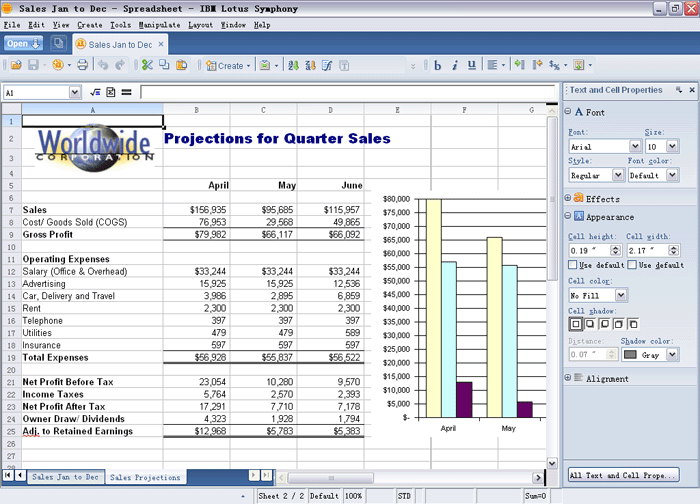

Users can insert slides from files in presentations by selecting Create > New Slides from File or using the keyboard shortcut Ctrl+Shift+I. The redundant saves have been eliminated when there is no change made since the previous autosave. The checkpoint of autosave has been redesigned. This improvement can greatly reduce the time it takes to save a presentation file. The unchanged part can be directly copied from memory. When saving the file, only the changed part needs to be exported. In ODP files, page is used as the saving unit, when loading the file, the start and end offset can be recorded.

To improve the loading performance, the above two steps now are executed in two threads, so the user can view a part of the document content while the document is loading, which is called ‘Asynchronous Loading’ For more information, please refer to the Wiki page: Asynchronous Loading Information Load (filter): Read the data from the disk and construct the content model in the memory.ĬreateView: Construct the view model according to the content model and display the contents to the users. Before, the selected text was replaced by a Tab character. When users select one or more paragraphs, press Tab, an indent is added before the paragraph.

Numerous usability enhancements for all editors The numbering and bullets can be moved to a new page or column when creating a new page break or column break. The inherited paragraph styles of Headline style can be associated with outline numbering style. For detailed information, visit this Wiki page. To improve the interoperability of the chapter numbering, users can add list level attribute to style:style according to ODF1.2. For any paragraph which contains numbering, users can use the continue numbering function. Restarting and continue numbering behavior is enhanced.

Numbering and bullets entries are available on the sidebar and they are context sensitive too. The layout for the Bullets and Numbering dialog has been re-designed, the focus is context sensitive when opening the dialog, and the default items can be customized and saved. The Bullets and Numbering window layout has changed to be more logically organized with a better visual design enabling you to set list styles more easily. Numbering and bullets function and usability enhancements To learn more about the new sidebar, watch this video for more details: Symphony Sidebar Video The sections and functions available depends on what object is selected. The availability of the property sections in Properties panel is context sensitive. Each section is a group of properties for an object. The Properties panel is divided into several sections.You are able to set properties for the selected objects, such as text, page, or graphics, easily with Properties panel. The new Properties panel consists of the object property groups frequently used in IBM Lotus Symphony. Users can perform actions on the sidebar such as: switching panels, dragging panels to dock them in other spaces, or floating the panels.The status of the panels can be managed, including initialization, status preservation, and context switching. Users can access the panels by clicking these icons. Lotus Symphony manages all floating and docking panels in a sidebar. There are many floating and docking panels in Lotus Symphony, such as the Properties, Style list, Clip Art, Navigator, Slide template, and DataPilot panels. All panels can be managed on the new sidebar:.New sidebar & 13 property sections (productivity enhancement)


 0 kommentar(er)
0 kommentar(er)
